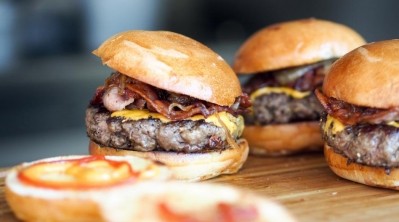YO! Sushi and Pizza Hut lend weight to calorie counting

Pizza Hut operates 400 sites in the UK, making it the largest operator in the country to make such a commitment. YO! Sushi is following suit, with all 54 of its UK sites set to include calorie info when its menu changes later this year.
The pair have made the move in response to the recently launched Department of Health (DoH) Responsibility Deal, which allows companies to make pledges on a range of issues centred around public health.
Both national chains will introduce the changes by September, the deadline set by the DoH. “We’ve got all the groundwork done. There’s not going to be a big song and dance about it and the calorie info will be subtle. We’re not going to overwhelm people with it,” said YO! Sushi business development director Alison Vickers.
The debate on what sort of nutritional data to put on a menu also appears to be over, with neither Guideline Daily Amounts nor the ‘traffic light’ system – both used by the retail sector – playing any part in the DoH’s technical guidelines.
While operators that make the pledge are under no legal obligation as yet, if they are found to be misrepresenting the products they sell they will be answerable to trading standards.
Calorie counters
Currently, the 200-strong Harvester chain and six-strong London-based The Real Greek are the only major restaurant brands to list calorie counts on menus, following a year-long trial coordinated by the Food Standards Agency that most deemed unsuccessful.
Jamie’s Italian has pledged to introduce calorie counts on menus “in the future”.
The majority of the restaurant and pub sector, however, will be relieved that the DoH has not been more Draconian. Speaking to Restaurant, Pizza Express said it had no intention of displaying calorie counts on all the dishes on its menu, a position shared by Alex Reilley, MD of the rapidly expanding Loungers Group.
With its current super-tight spending restrictions, the Government does not have the funding to put in place and – critically – enforce legislation, meaning that the industry will be charged with self-regulation.
However, Health Secretary Andrew Lansley has indicated several times that if it is seen to be uncooperative, more specific legislation will be introduced.
Taking action
What exactly will constitute a lack of cooperation remains unclear, with operators currently able to sign up to the Responsibility Deal and cherry-pick the pledges to which they will commit.
The individual commitments most relevant to the industry in the deal are ‘out of home calorie labelling’, ‘salt reduction’ and ‘artificial trans fat removal’.
Most groups that have signed up to the deal will not address the issue of calorie labelling, including Pizza Express and pub giant JD Wetherspoon.
Major national catering firm Compass Group, on the other hand, has pledged to introduce calorie labelling, but would not comment on whether this will include its fine dining arm, Restaurant Associates, which operates four public restaurants.
Several major chains, including Pizza Express, JD Wetherspoon and Prezzo do however offer calorie information on part of their menus, under a “lighter options” section – a move food and leisure industry entrepreneur Sarah Willingham suggests operators adopt before committing to full menu calorie labelling.
Speaking at a Unilever conference in February she said: “This is a trend that is not going to go away, so to do nothing is not an option. When trends like this come to the forefront it’s important to take it into context. Operators should have four lighter options or four lower fat options on their menu as the first step, and not go crazy trying to break it all down.”













